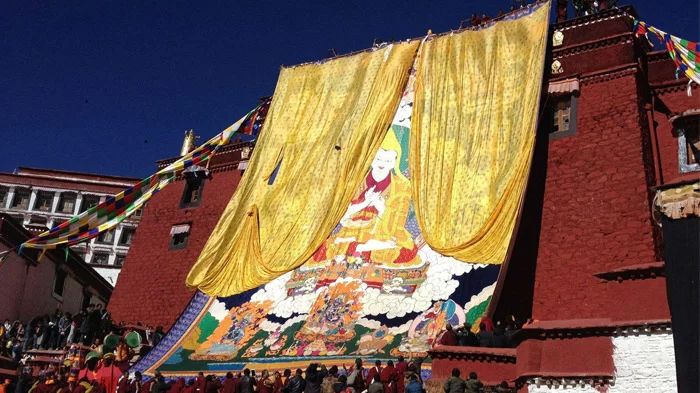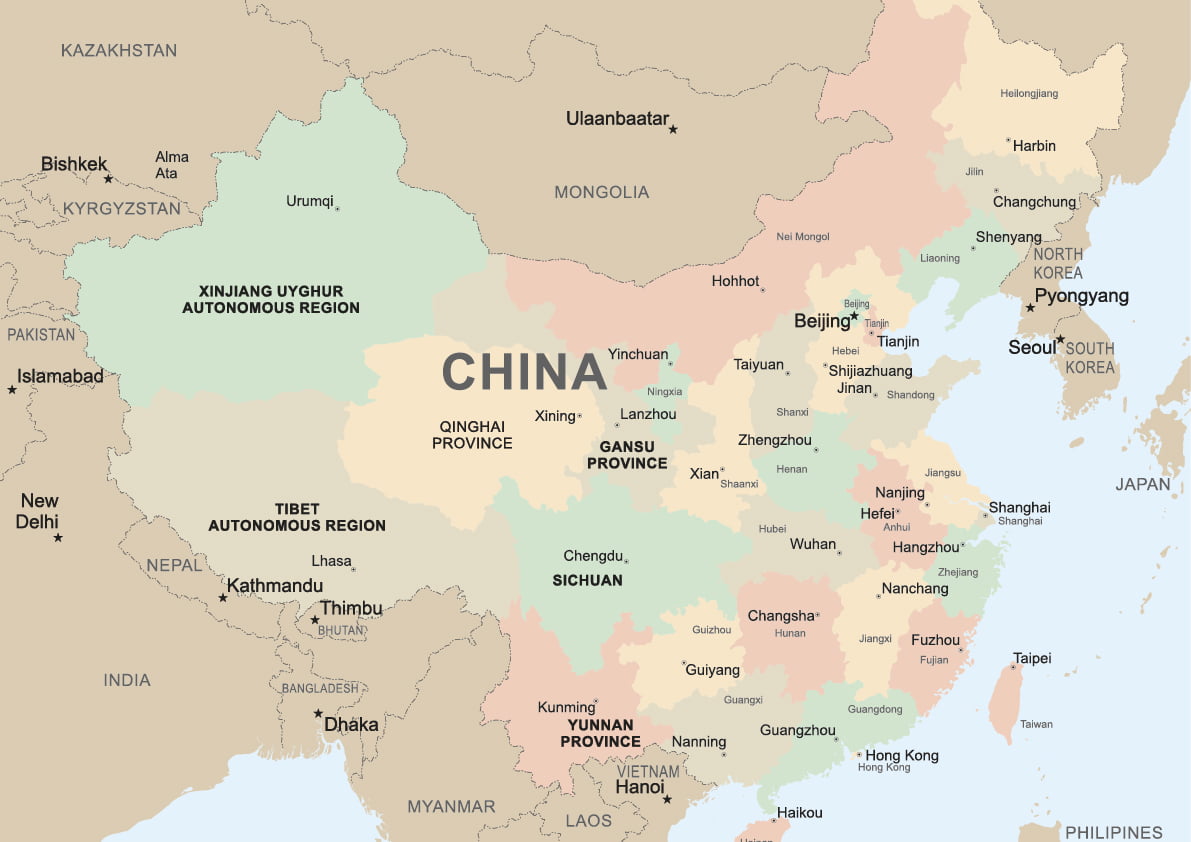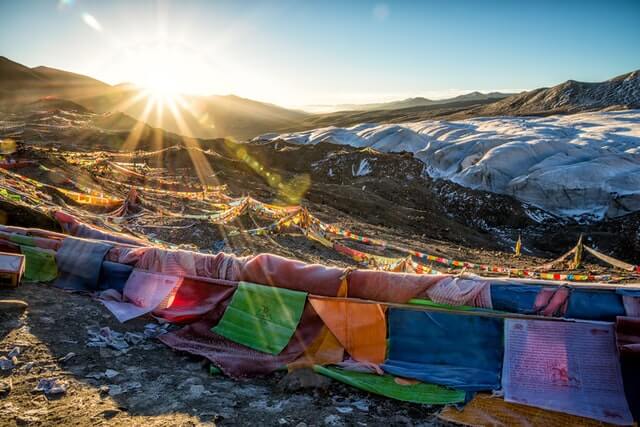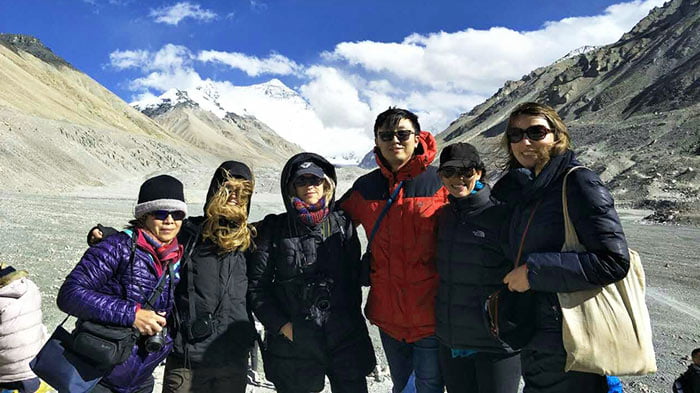Ganden Monastery in Dagzê County of Lhasa is one of the Great Three Monasteries of the Gelug School of Tibetan Buddhism, and one of the most important monasteries in Tibet. Lying around 57 kilometers to the east of Lhasa, just off the southern side of the Sichuan Tibet Highway, this unique monastery lies at the top of Wangbori Mountain, in a shallow natural depression just below the actual peak.
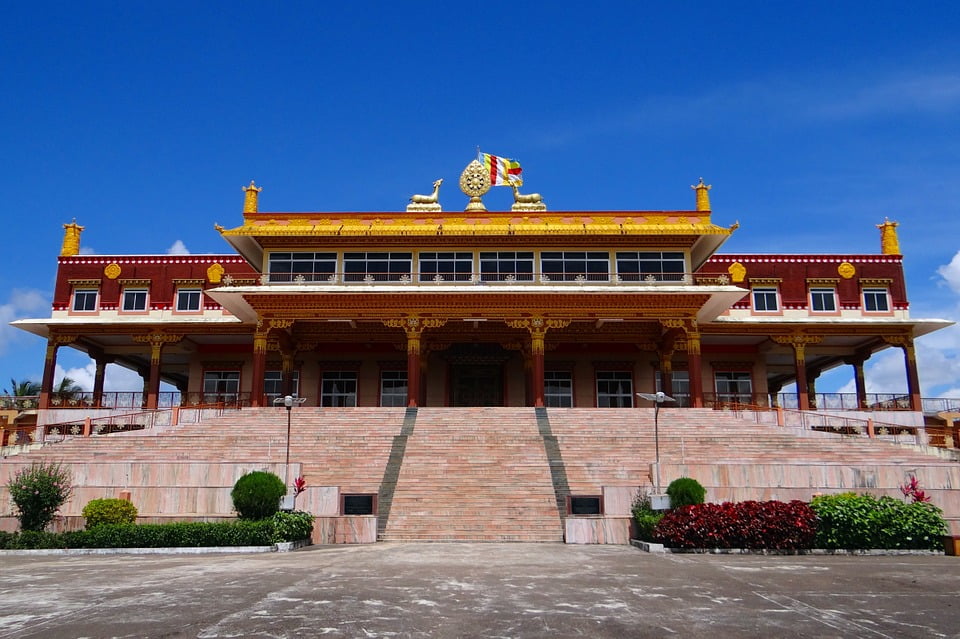
History Brief
It was founded in 1409 by the famous teacher of Tibetan Buddhism, Je Tsongkhapa, the founder of the Gelug School of Tibetan Buddhism. Tsongkhapa was fond of the monastery at Ganden, and often stayed there to meditate in his hermitage below the monastery. He eventually dies at the monastery in 1419, at the age of just 62. Before he dies, Tsongkhapa gave his staff and robe to Gyeltsabjey, the first Ganden Tripa, or “throne holder of Ganden”, the overall abbot of the Gelug School.
Enjoy the Ganden kora
The Ganden Kora is one of the most beautiful short kora routes in the world, and while it can easily be completed in one day and is not an arduous trek, it is one of the most important pilgrimage sites outside Lhasa because of its connections with Je Tsongkhapa, the founder of the Gelug School of Tibetan Buddhism. Trekking the kora routes around Ganden is one of the best ways to get to see the stunning vista from the top of Wangbori Mountain, looking across the valley and over the G318 Sichuan Tibet Highway to the mountains beyond, far to the north. The kora can be done at almost any time of the year, and if you plan to make the trip to Ganden, you should wait until you have acclimatized in Lhasa first, as Ganden is almost 1,000 meters higher.
Watch the Thangka Unfolding at Ganden Festival
One of the most important religious ceremonies in the Gelug Buddhist calendar, the Ganden Thangka Festival is held every year on the 15th day of the sixth lunar month, in memory of Je Tsongkhapa. Thousands of local Buddhists and tourists gather at the monastery for the Thangka unveiling ceremony, when a huge giant thangka is carried reverently out of the monastery onto the hillside behind and unfurled in front of the crowds. The people start to arrive very early in the morning, and climb to the top of the mountain to watch the sunrise and chant their prayers as they wait. Then, as the thangka is brought out and unfurled onto the hillside, standing around 200 feet tall and 150 feet wide, the crowds of devotees rush forwards to touch the hem of the sacred painting of Buddha and throw white hada onto it for blessings.
Ways to Avoid Altitude Sickness When Touring Ganden Monastery
if you are traveling to Ganden to walk along the kora routes, then it is best to make sure that you are properly acclimatized to the altitude of Lhasa before you do so. Ganden Monastery lies at around 4,300 meters above sea level, over 650 meters higher than the Tibetan capital and high enough to cause severe altitude sickness if you are not acclimatized to the elevation of the plateau.
The best thing to do once you reach Lhasa is to rest and drink plenty of water, eating regular meals of high-protein foods such as red meat and vegetables, to keep yourself from getting dehydrated and ill. Altitude sickness can affect anyone, and often most people fell the effects of it when they get to the plateau. You should also avoid any strenuous exercise until you are acclimatized, and refrain from smoking and drinking alcohol and coffee for a couple of days until you are feeling better and well adjusted.
How to Get to Ganden Monastery
Getting to Ganden is relatively easy, since you will be taken there by your guide and driver in the vehicle provided for your tour. Ganden lies to the east of Lhasa, and the route takes you across the Lhasa rover and then left onto the G318 National Road, also known as the Sichuan Tibet Highway, which runs all the way through Nyingchi to Chengdu. After around 30 kilometers, you will turn off the highway and switch back on yourself to the foothills of Wangbori Mountain. Heading south until you reach a small settlement, you then turn to head up the mountain, along the winding roads that lead through hairpin bends and switchbacks to the monastery.

